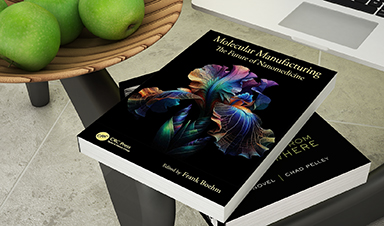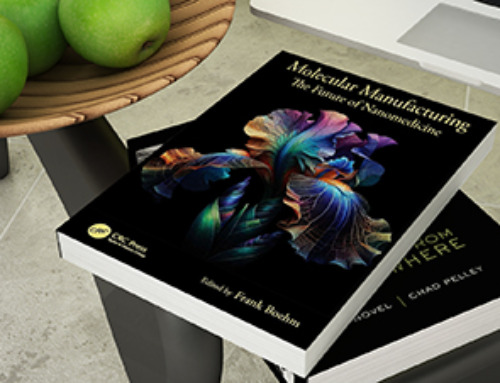| Researchers from ITMO’s SCAMT Institute have developed a new nanomedicine testing system based on plant leaves. This new solution will make it possible to significantly cut down on animal testing. | |
| The system was described in Nano Letters (“Bioinspired In Vitro Brain Vasculature Model for Nanomedicine Testing Based on Decellularized Spinach Leaves”). | |
| One of the most challenging tasks for medical science nowadays is the development of an efficient model for testing of nanopharmaceutical treatments. This model has to represent the body part or system targeted by the treatment, such as the cardiovascular system, while also making it possible to monitor the treatment in action. | |
| Existing models based on cell or tissue cultures cannot mimic the true complexity of a living organism. Some researchers also rely on microfluidic chips that can imitate the cardiovascular system with the channels that can be etched into them. | |
| However, these chips are far from actual biological objects in terms of their composition and physical parameters. Moreover, they require a long and costly preparation and carry a risk of delivering imprecise research results. | |
| “Despite the potential of nanopharmaceutics, as well as a great number of publications and preclinical trials, there still aren’t enough cases of these treatments seeing any practical application. These days, there is an extremely high demand for testing models that could imitate trials on live organisms. Any attempt at moving to a new model brings us closer to a breakthrough and helps spare the lives of a great number of lab animals,” explains Vladimir Vinogradov, a co-author of the article and professor at ITMO’s ChemBio cluster. | |
| Taking into account the drawbacks of traditional models, scientists at ITMO’s SCAMT Institute developed a model based on a spinach leaf. At its core is the leaf’s vasculature with all cell components removed apart from the cell walls. | |
| The model consists of cellulose, a substance that makes plant tissue more mechanically durable and stable in shape compared to that of animals. The resulting model is comparable to the arterioles and capillaries of the human brain in terms of their branching and diameter. This feature will make it possible to use the model to test both traditional and nanopharmaceutical treatments. | |
| The new model has already been used to simulate thrombosis: first, the researchers inserted a model thrombus into the vasculature. Then, loaded nanoparticles were magnetically guided into the blocked area in order to dissolve the thrombus. | |
| After successful tests of the model’s efficiency, the researchers are going to plant actual human cells into the cellulose scaffold to make the system an even more realistic imitation of the human vasculature. | |
| “We want to attract the attention of the scientific community to the problem of irrational usage of laboratory animals. Currently, you only have to test a new substance on cell cultures before proceeding with animal trials. I think this is wrong – we need another stage in between these two which would identify flaws and provide room for improvement in drugs, thus saving the lives of many animals. Maybe plant-based models will serve as this middle stage,” says Aleksandra Predeina, a co-author of the article and a researcher at ITMO’s Faculty of Biotechnologies. |
News
Two New Books From Frank Boehm, NA Founder – To be Released Dec. 2025
Molecular Manufacturing: The Future of Nanomedicine This book explores the revolutionary potential of atomically precise manufacturing technologies to transform global healthcare, as well as practically every other sector across society. This forward-thinking volume examines [...]
What could the future of nanoscience look like?
Society has a lot to thank for nanoscience. From improved health monitoring to reducing the size of electronics, scientists’ ability to delve deeper and better understand chemistry at the nanoscale has opened up numerous [...]
Scientists Melt Cancer’s Hidden “Power Hubs” and Stop Tumor Growth
Researchers discovered that in a rare kidney cancer, RNA builds droplet-like hubs that act as growth control centers inside tumor cells. By engineering a molecular switch to dissolve these hubs, they were able to halt cancer [...]
Platelet-inspired nanoparticles could improve treatment of inflammatory diseases
Scientists have developed platelet-inspired nanoparticles that deliver anti-inflammatory drugs directly to brain-computer interface implants, doubling their effectiveness. Scientists have found a way to improve the performance of brain-computer interface (BCI) electrodes by delivering anti-inflammatory drugs directly [...]
After 150 years, a new chapter in cancer therapy is finally beginning
For decades, researchers have been looking for ways to destroy cancer cells in a targeted manner without further weakening the body. But for many patients whose immune system is severely impaired by chemotherapy or radiation, [...]
Older chemical libraries show promise for fighting resistant strains of COVID-19 virus
SARS‑CoV‑2, the virus that causes COVID-19, continues to mutate, with some newer strains becoming less responsive to current antiviral treatments like Paxlovid. Now, University of California San Diego scientists and an international team of [...]
Lower doses of immunotherapy for skin cancer give better results, study suggests
According to a new study, lower doses of approved immunotherapy for malignant melanoma can give better results against tumors, while reducing side effects. This is reported by researchers at Karolinska Institutet in the Journal of the National [...]
Researchers highlight five pathways through which microplastics can harm the brain
Microplastics could be fueling neurodegenerative diseases like Alzheimer's and Parkinson's, with a new study highlighting five ways microplastics can trigger inflammation and damage in the brain. More than 57 million people live with dementia, [...]
Tiny Metal Nanodots Obliterate Cancer Cells While Largely Sparing Healthy Tissue
Scientists have developed tiny metal-oxide particles that push cancer cells past their stress limits while sparing healthy tissue. An international team led by RMIT University has developed tiny particles called nanodots, crafted from a metallic compound, [...]
Gold Nanoclusters Could Supercharge Quantum Computers
Researchers found that gold “super atoms” can behave like the atoms in top-tier quantum systems—only far easier to scale. These tiny clusters can be customized at the molecular level, offering a powerful, tunable foundation [...]
A single shot of HPV vaccine may be enough to fight cervical cancer, study finds
WASHINGTON -- A single HPV vaccination appears just as effective as two doses at preventing the viral infection that causes cervical cancer, researchers reported Wednesday. HPV, or human papillomavirus, is very common and spread [...]
New technique overcomes technological barrier in 3D brain imaging
Scientists at the Swiss Light Source SLS have succeeded in mapping a piece of brain tissue in 3D at unprecedented resolution using X-rays, non-destructively. The breakthrough overcomes a long-standing technological barrier that had limited [...]
Scientists Uncover Hidden Blood Pattern in Long COVID
Researchers found persistent microclot and NET structures in Long COVID blood that may explain long-lasting symptoms. Researchers examining Long COVID have identified a structural connection between circulating microclots and neutrophil extracellular traps (NETs). The [...]
This Cellular Trick Helps Cancer Spread, but Could Also Stop It
Groups of normal cbiells can sense far into their surroundings, helping explain cancer cell migration. Understanding this ability could lead to new ways to limit tumor spread. The tale of the princess and the [...]
New mRNA therapy targets drug-resistant pneumonia
Bacteria that multiply on surfaces are a major headache in health care when they gain a foothold on, for example, implants or in catheters. Researchers at Chalmers University of Technology in Sweden have found [...]
Current Heart Health Guidelines Are Failing To Catch a Deadly Genetic Killer
New research reveals that standard screening misses most people with a common inherited cholesterol disorder. A Mayo Clinic study reports that current genetic screening guidelines overlook most people who have familial hypercholesterolemia, an inherited disorder that [...]





















